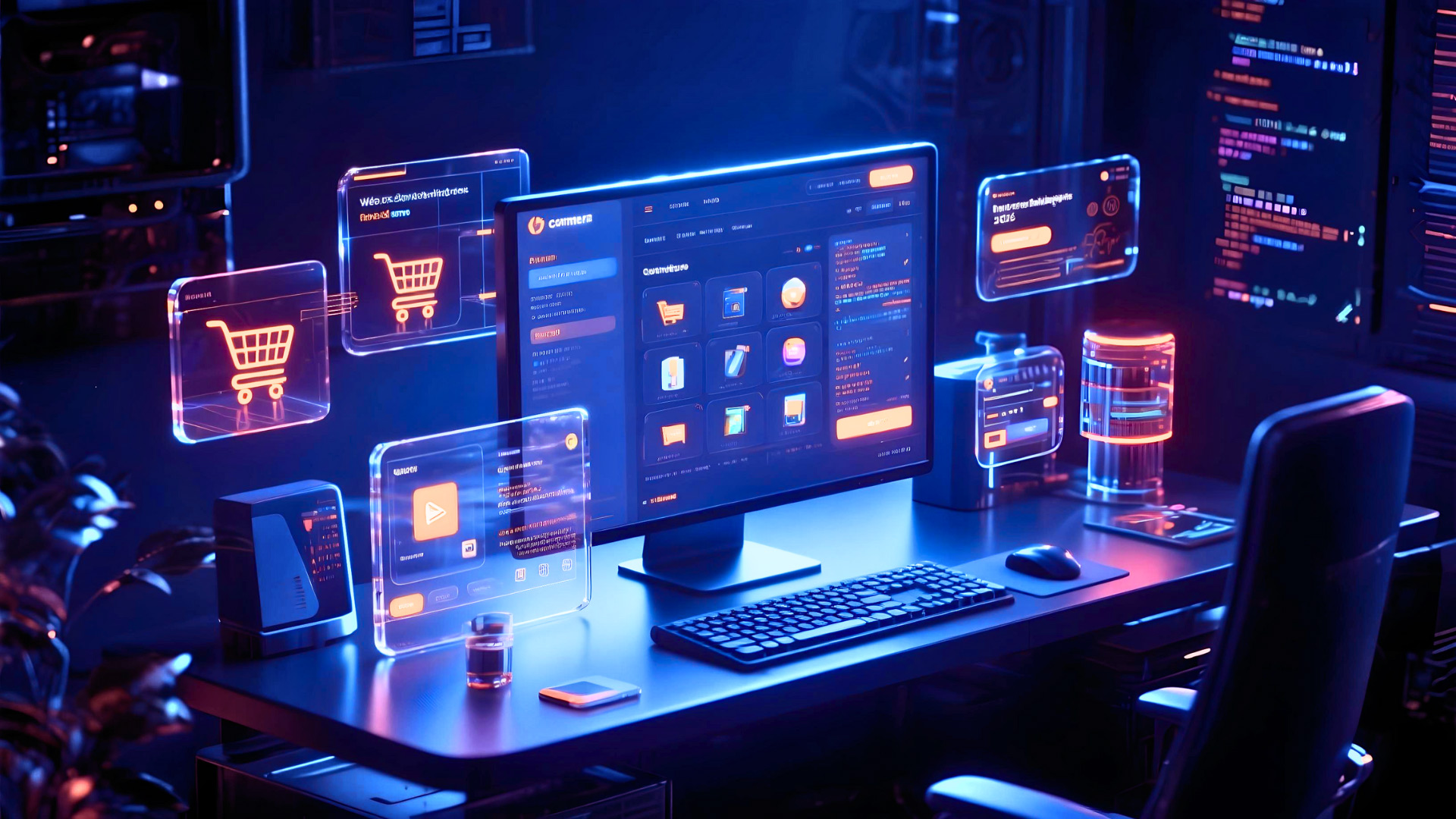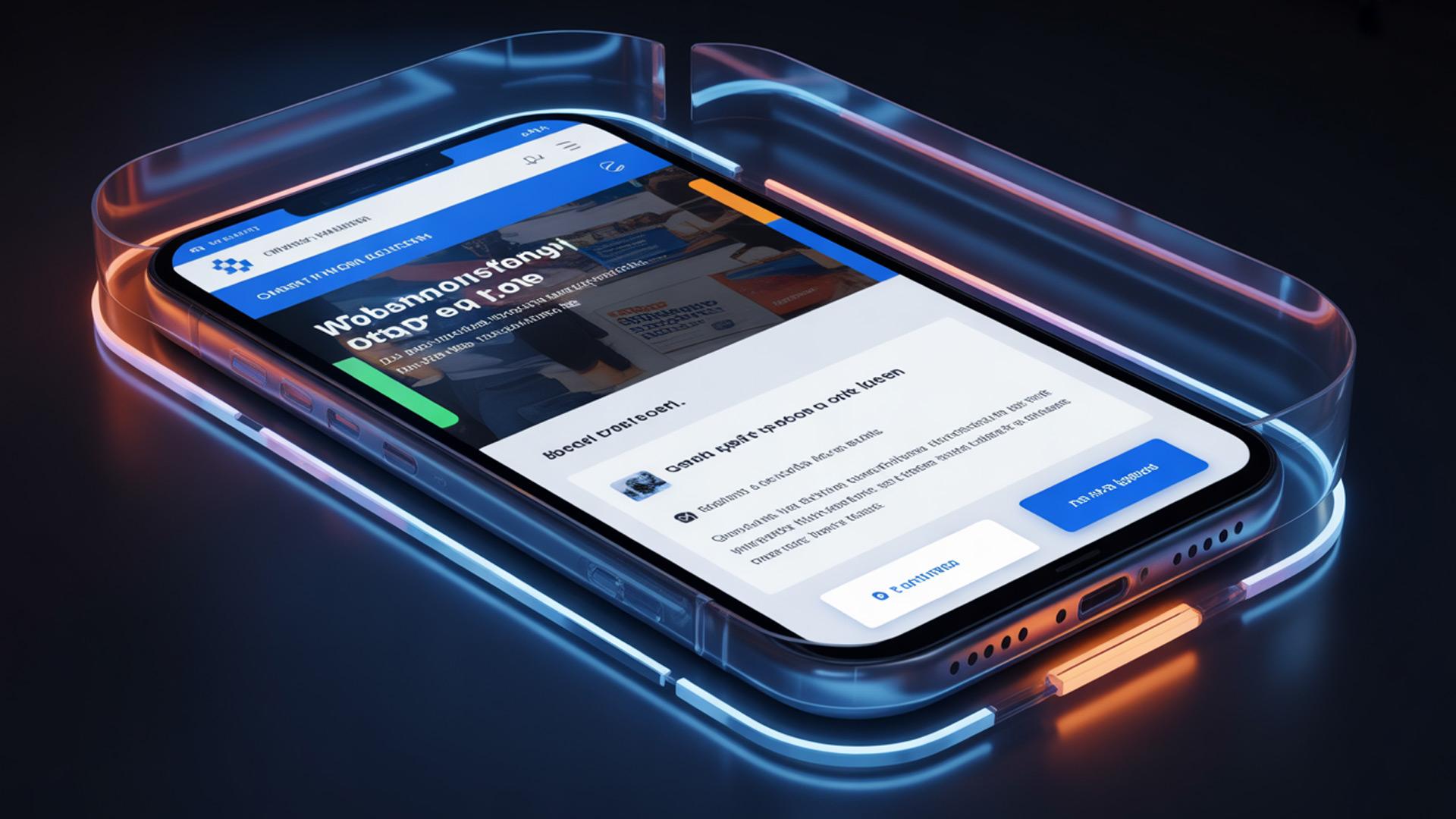

The web is always developing and redefining how we engage with the digital world, much like a machine. Being ahead of the curve is not only an advantage, but also an essential for businesses and content creators. So, in 2026, the web will enter a new era as a result of tech-human connectivity.
This extensive research focuses on the web design and development trends that will have the most influence and become the primary themes in 2026. These are not temporary events, but the basis for future digital interactions.
AI has advanced substantially and is no longer only a buzzword. In 2026, AI will be the main source of design innovation and a developer's greatest resource in coding across the web design and development lifecycle.
The web is turning into an experience that is more three-dimensional and lifelike. As a result of the improvements in VR/AR hardware and WebGL functionality, the year 2026 will be marked by the substantial movement of the 3D and interactive realms.
While most websites aim for a sophisticated, minimalist look, some designers prefer the "raw" and less conventional path to identify themselves. This style, which is frequently referred to as Neo-Brutalism or Anti-Design, features:
As the environmental impact of the digital world is being critically evaluated, the need for sustainable web design and development is no longer a matter of concern for a few but rather a main responsibility of businesses. The emphasis of this movement is on the production of websites that deliver excellent performance with minimal environmental impact.

As mobile traffic accounts for 64% worldwide, web design and development trends are going to enhance mobile-first strategies and PWAs, which are hybrid sites that provide app-like rapidity, offline access, and push notifications. There will be no limit to the adaptation of layouts with the incorporation of videos and elaborated footers for effortless navigation.
Why it matters: PWAs are amazing tools for decreasing the costs of development, but they can still be scaled up to massive audiences, which is a fact that has been proven by Uber and Starbucks. Besides that, they boost UX with fast loading and the incorporation of new features such as voice-activated parts.
Business impact: Better SEO strategies as a result of mobile indexing and lower user drop-offs. Incorporate "PWA development for mobile-first businesses" as a part of your keyword strategy.
Motion design is reaching higher levels of elegance and utility. The year 2026 will see the rise of subtle, functional micro-interactions and user-guiding dynamic typography rather than loud, distracting animations.
Given the growth of smart speakers and voice assistants, being efficient in voice search and communication has become an absolute necessity. The next generation of web design and development considers how people will find and engage with a website without using a screen.
Midnight minimalism, you're history. Next year will be full of loud, expressive color combinations with high-saturation gradients, retro brutalism (which is an architectural style that uses asymmetric grids and raw textures), and inventive color branding changing for each page or product. Symbolic geometrical figures and organic shadows create the illusion of space without overfilling.
Why it is important: These kinds of human-touched visuals can be seen as an opposition to AI's polished perfection, and, therefore, they attract more because of their authenticity and being out of the ordinary. They assist individuals in focusing their attention by using diagonal lines and large, eye-catching titles.
Pro tip: Use a simple color scheme to balance the impression. Colorful websites perform well for visual search terms like "bold gradient web design ideas 2026" in web design and development SEO.
On one hand, we’re seeing bold colour return; on the other, there is continued interest in dark mode, monochromatic palettes, minimalistic layouts, and depth via shadows (neumorphism). For instance: “Dark mode and low light UX design … monochromatic websites … neomorphism design trend.”
From a web design and development viewpoint:
The design and development of the web will be a democratic process, and the change will not be slow. No-code and low-code platforms are getting more and more powerful to the point that it is possible to create a complex web application without the need to write everything from scratch.
The future of web design and development is here, blending AI, immersion, and bold aesthetics to create unparalleled user experiences. Navigating these trends requires a partner who understands both innovation and strategic implementation.
Connect with us to discover how we can leverage AI, immersive design, and sustainable development to create a digital experience that captivates your audience and grows your business.
The 2026 web design and development trends show a future of a smarter, more engaging, and more efficient online experience. Still, at the heart of it, the main objective is the same: to make real and effective experiences for people. AI and VR can be seen as just a convenient way to reach that goal. The leading brands online in 2026 will be the ones that seamlessly combine these sophisticated features with simple design and a straightforward, human-centered approach.
2026 has brought the end to simple, static websites. Good web design and development are not just about an attractive page anymore; it is about creating experiences that are mobile-first, AI-powered, personalized, visually appealing, performance-optimized, secure, and even eco-friendly. You will bring your website a step higher, being able to attract more visitors and keep them engaged, as well as being at the top of the fast-changing online landscape, if you comprehend these trends and use them in your site in a proper manner.
If you keep your design trendy, your code high-quality, and your user at the centre, you will be able to cope with the next wave of web design and development, whatever it might be.

The web is always developing and redefining how we engage with the digital world, much like a machine. Being ahead of the curve is not only an advantage, but also an essential for businesses and content creators. So, in 2026, the web will enter a new era as a result of tech-human connectivity.
This extensive research focuses on the web design and development trends that will have the most influence and become the primary themes in 2026. These are not temporary events, but the basis for future digital interactions.
AI has advanced substantially and is no longer only a buzzword. In 2026, AI will be the main source of design innovation and a developer's greatest resource in coding across the web design and development lifecycle.
The web is turning into an experience that is more three-dimensional and lifelike. As a result of the improvements in VR/AR hardware and WebGL functionality, the year 2026 will be marked by the substantial movement of the 3D and interactive realms.
While most websites aim for a sophisticated, minimalist look, some designers prefer the "raw" and less conventional path to identify themselves. This style, which is frequently referred to as Neo-Brutalism or Anti-Design, features:
As the environmental impact of the digital world is being critically evaluated, the need for sustainable web design and development is no longer a matter of concern for a few but rather a main responsibility of businesses. The emphasis of this movement is on the production of websites that deliver excellent performance with minimal environmental impact.

As mobile traffic accounts for 64% worldwide, web design and development trends are going to enhance mobile-first strategies and PWAs, which are hybrid sites that provide app-like rapidity, offline access, and push notifications. There will be no limit to the adaptation of layouts with the incorporation of videos and elaborated footers for effortless navigation.
Why it matters: PWAs are amazing tools for decreasing the costs of development, but they can still be scaled up to massive audiences, which is a fact that has been proven by Uber and Starbucks. Besides that, they boost UX with fast loading and the incorporation of new features such as voice-activated parts.
Business impact: Better SEO strategies as a result of mobile indexing and lower user drop-offs. Incorporate "PWA development for mobile-first businesses" as a part of your keyword strategy.
Motion design is reaching higher levels of elegance and utility. The year 2026 will see the rise of subtle, functional micro-interactions and user-guiding dynamic typography rather than loud, distracting animations.
Given the growth of smart speakers and voice assistants, being efficient in voice search and communication has become an absolute necessity. The next generation of web design and development considers how people will find and engage with a website without using a screen.
Midnight minimalism, you're history. Next year will be full of loud, expressive color combinations with high-saturation gradients, retro brutalism (which is an architectural style that uses asymmetric grids and raw textures), and inventive color branding changing for each page or product. Symbolic geometrical figures and organic shadows create the illusion of space without overfilling.
Why it is important: These kinds of human-touched visuals can be seen as an opposition to AI's polished perfection, and, therefore, they attract more because of their authenticity and being out of the ordinary. They assist individuals in focusing their attention by using diagonal lines and large, eye-catching titles.
Pro tip: Use a simple color scheme to balance the impression. Colorful websites perform well for visual search terms like "bold gradient web design ideas 2026" in web design and development SEO.
On one hand, we’re seeing bold colour return; on the other, there is continued interest in dark mode, monochromatic palettes, minimalistic layouts, and depth via shadows (neumorphism). For instance: “Dark mode and low light UX design … monochromatic websites … neomorphism design trend.”
From a web design and development viewpoint:
The design and development of the web will be a democratic process, and the change will not be slow. No-code and low-code platforms are getting more and more powerful to the point that it is possible to create a complex web application without the need to write everything from scratch.
The future of web design and development is here, blending AI, immersion, and bold aesthetics to create unparalleled user experiences. Navigating these trends requires a partner who understands both innovation and strategic implementation.
Connect with us to discover how we can leverage AI, immersive design, and sustainable development to create a digital experience that captivates your audience and grows your business.
The 2026 web design and development trends show a future of a smarter, more engaging, and more efficient online experience. Still, at the heart of it, the main objective is the same: to make real and effective experiences for people. AI and VR can be seen as just a convenient way to reach that goal. The leading brands online in 2026 will be the ones that seamlessly combine these sophisticated features with simple design and a straightforward, human-centered approach.
2026 has brought the end to simple, static websites. Good web design and development are not just about an attractive page anymore; it is about creating experiences that are mobile-first, AI-powered, personalized, visually appealing, performance-optimized, secure, and even eco-friendly. You will bring your website a step higher, being able to attract more visitors and keep them engaged, as well as being at the top of the fast-changing online landscape, if you comprehend these trends and use them in your site in a proper manner.
If you keep your design trendy, your code high-quality, and your user at the centre, you will be able to cope with the next wave of web design and development, whatever it might be.